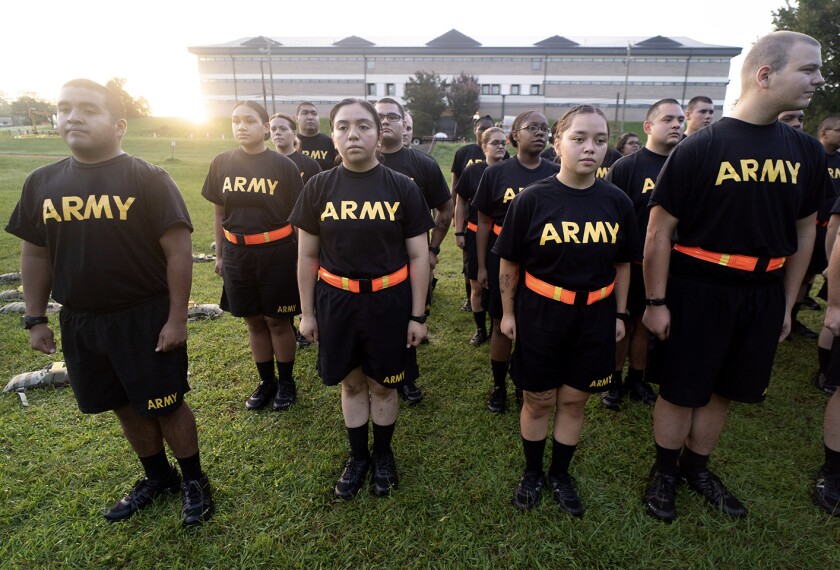Nearly 200 colleges and universities in six states have agreed to let students skip remedial coursework if they reach the college-readiness score on the 2015 Smarter Balanced assessment.
The April 15 announcement marks a major development in the consortium’s bid to persuade higher education to accept the “college ready” cut score on its 11th grade test for course-placement purposes. Until recently, it had only the state college and university systems in two states signed on.
“This is a major endorsement of the standards themselves and of the assessment as an accurate measure of those standards,” said Jacqueline King, the director of higher education collaboration for Smarter Balanced.
The Partnership for Assessment of Readiness for College and Careers, or PARCC, has enlisted similar pledges from two colleges in Colorado and from Illinois’ system of community colleges. Students in 10 states and the District of Columbia are taking the PARCC tests this year; students in 18 states are taking Smarter Balanced.
In six states, a total of 197 higher education campuses have agreed to use Smarter Balanced test results for remedial course placement.
California: 101
All 23 campuses of California State University and 78 of the state’s 112 community colleges
Washington State: 49
All 40 of its two- and four-year colleges and nine independent colleges and universities
Oregon: 24
All public colleges and universities
Hawaii: 10
All public colleges and universities
Delaware: 7
All six of its public colleges and universities and one independent university
South Dakota: 6
All public colleges and universities
Source: Smarter Balanced Assessment Consortium
The two state consortia, which used a total of $360 million in federal funds to design tests for the common core, have both been working hard to gain higher education’s acceptance of their college-readiness scores in deciding whether students can skip remedial classes and enroll in entry-level, credit-bearing courses. (The scores are not intended to be used for admissions.)
How widespread that acceptance becomes is a pivotal question with a potentially huge impact. Large-scale acceptance of the tests’ college-readiness cut scores would suggest that colleges and universities agree with the consortia’s most central assumption: that scoring at those levels means that a student is ready for credit-bearing college work.
A statement issued by Delaware Secretary of Education Mark Murphy reflects that shift. The decisions of his state’s colleges and universities “show that they believe the common-core standards are rigorous and that the Smarter Balanced assessments provide a good measure of college readiness,” he said.
‘Concrete Benefits’
Higher education’s acceptance of consortium scores could also make inroads into reducing the high college-remediation rates that cost students time and money, and often undermine their ability to complete baccalaureate degrees.
“Oregon’s higher education course-placement agreements are a strong step forward in high school-to-college alignment, signaling to high school students that their hard work on the Smarter Balanced assessments and rigorous coursework in the 12th grade provide concrete benefits once they get to campus,” Ben Cannon, the state’s higher education coordinating commission executive director, said in a statement.
Smarter Balanced’s announcement means that 197 campuses—most of them public colleges and universities, including some flagship campuses—will allow students to sign up for credit-bearing courses without any remedial classes if they score a 4 on the consortium’s four-level test. (The PARCC test has five levels, with 4 and above signifying college readiness.)
Many of the campuses are adding the Smarter Balanced test to the list of options students have for demonstrating their readiness for credit-bearing coursework. Some will retain the use of current placement tests, but allow students to use Smarter Balanced scores instead. Some also allow students to use a given score on the act or sat for course-placement decisions, Ms. King said.
At the community college level, campuses will likely keep using placement tests such as Accuplacer, but will now also accept Smarter Balanced scores.
The campuses vary in how they will approach students who score a 3 on the Smarter Balanced assessment. Many will require students at that level to supply additional evidence of ongoing study, such as courses taken during the senior year.
Both consortia are hoping that a widespread higher education embrace of their college-readiness scores will produce a key benefit for students: being able to better plan and use their senior year. The thinking goes like this: If students fall short of the college-readiness level on the 11th grade consortium test, they can take the necessary courses to pass muster in 12th grade. Those whose 11th grade scores show they’re ready for more challenging work can opt for higher-level classes.
‘Transition’ Courses
Increasingly, states are designing “transition courses” to meet that need. California originated the idea many years ago with its Early Assessment Program. Delaware, Hawaii, Nevada, South Dakota, Washington state, and West Virginia are also working on various approaches. Some are using adapted versions of transition courses designed by the Southern Regional Education Board.
The decision to use consortium test scores can be tricky. Using 11th grade Smarter Balanced test results to guide students into 12th grade courses, for instance, is complicated by timing: Smarter Balanced results won’t be available until after many high schools schedule students’ 12th grade courses. One answer could be to use current college-placement tests to shape stdents’ senior year, but that is under discussion, Ms. King said.





